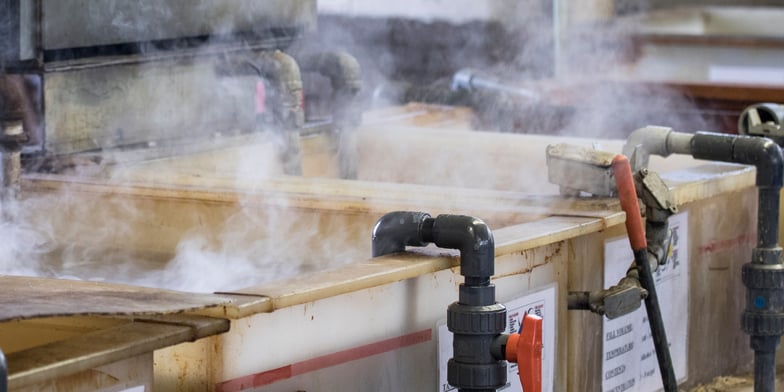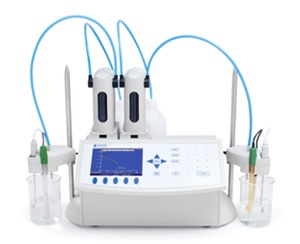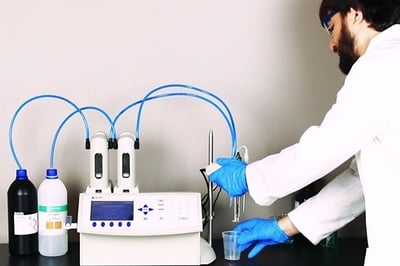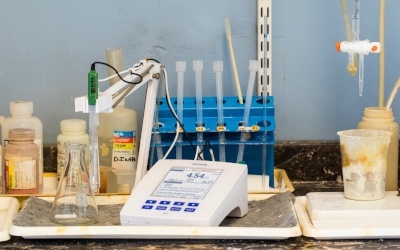 We all know that precision and consistency is the key to producing a quality product. But because of the competitive nature of the plating industry today, simply saying you have a high quality process is no longer enough.
We all know that precision and consistency is the key to producing a quality product. But because of the competitive nature of the plating industry today, simply saying you have a high quality process is no longer enough.
Customers today are holding platers to extremely high testing standards. These standards are upheld both by prestigious certifications, such as NADCAP, or through frequent customer audits. Getting certified allows you to excel in your quality program, increase your customer base, and ensure a documented high-quality product over your competitors.
Whether you are going through a certification process, a customer audit, or want to aquire new customers, having the right analysis tools in place helps ensure that your process will meet or exceed almost any requirement.
Using an Automatic Titrator Ensures Accurate Results and Provides Traceability
Titrations are one of the most common analyses performed to ensure plating bath quality. We use titrations to determine major bath components, such as metals, salt, or acidity.
 Manual titrations (where a technician manually doses the titrant from a glass burette and determines the endpoint visually with a color indicator) are time consuming and of limited accuracy. Additionally, because the results from these analyses are manually recorded or entered into a reporting system, there is limited data traceability.
Manual titrations (where a technician manually doses the titrant from a glass burette and determines the endpoint visually with a color indicator) are time consuming and of limited accuracy. Additionally, because the results from these analyses are manually recorded or entered into a reporting system, there is limited data traceability.
In potentiometric titration, the exact titration endpoint is detected with an electrode rather than a color indicator. Automatic titrators combine accurate endpoint detection with automatic precision dosing, which yields repeatable and accurate results.
Additionally, automatic titrators require minimal technician interaction, freeing up valuable time. Many metal finishers take advantage of this time to run more frequent analyses on their baths. More frequent, accurate testing results in better bath management and higher quality products.
 Autotitrators provide traceable and trackable Good Laboratory Practices (GLP) data by generating a report for each analysis. These titration reports include information such as titration result and endpoint volume along with a time and date stamp.
Autotitrators provide traceable and trackable Good Laboratory Practices (GLP) data by generating a report for each analysis. These titration reports include information such as titration result and endpoint volume along with a time and date stamp.
Often, these reports can be customized to include data such as test method parameters, sample information (like bath number), electrode ID, and operator name. You can transfer your reports to a local computer or print them; printed reports can then be archived with the technician’s signature to ensure traceability. These detailed reports can be kept for internal use or serve as records for audit requirements.
Methods Conform to Industry Standards
When purchasing capital equipment, inquire about recommended standard operating procedures (SOPs) for your analysis. Many manufacturers of analytical instrumentation for plating analyses will have SOPs that have optimized for the equipment you’re acquiring.
These manufacturer-optimized procedures should be adapted from a standard reference method for compliance with industry standards. Formalized SOPs ensure consistency between technicians in performing analyses and provide method transparency to potential and existing customers, and certifying bodies.

Leveraging Instrumentation for Certification
Taking Advantage of an AIQ Does Much of the Work For You
Acquiring the right instrumentation is only the first step in increasing your ability to perform accurate analyses; the quality of the analysis is only as good as your laboratory technique and the quality of the instrument.
An analytical instrument qualification (AIQ) is a service that documents and confirms that your device was properly installed and performs within manufacturer specifications. An AIQ is an optional service provided by the instrument manufacturer or a third party instrumentation service team. This service is a huge benefit, ensuring that your instrument is ready to use as soon as it’s installed.
An AIQ consists of three main components: installation qualification (IQ), operational qualification (OQ), and performance qualification (PQ).
The IQ ensures and documents that the instrument is installed correctly, and in an acceptable operating environment for use. The OQ documents and validates that the instrument meets the manufacturer’s accuracy specifications for repeatability and linearity. Operator training is also performed and documented in the OQ, certifying that the technicians have been trained to operate and maintain the equipment.
The PQ validates the individual analyses and SOPs to ensure that they are fit for use. The SOPs outline the exact laboratory method performed for each analysis. Your instrumentation service representative should provide a template for the PQ, but the owner performs the qualification.
Performance qualification of a method provides information on the repeatability and accuracy of the method while practiced on the owners sample of interest.

Calibration Ensures Confidence in Your Data
For continued instrument compliance and traceability, your instrument and all necessary electrodes should be properly calibrated. When measuring pH or performing titrations to fixed pH endpoints, the pH electrode should be calibrated to at least two points, bracketing the expected range of the sample.
NIST traceable buffers are available for pH calibration for reporting compliance. On many automatic titrators, the pH calibration data can be included with analysis reports.
Because of the high precision of the electronics of research grade analytical instruments such as automatic titrators, annual calibration of the electronics is recommended. This ensures the stability of the readings. Manufacturers usually recommend instrument calibration annually.
Calibration services should include accompanying documentation from the manufacturer or third party instrumentation service team. Often, this calibration is performed along with a revalidation of the instrument and recertification of technicians (IQ/OQ) as an onsite service visit.

What Hanna Instruments Has to Offer
Hanna has everything you need to ensure a robust testing protocol for your customer and accreditation requirements. In addition to our complete selection of titration systems, we have a complete range of services:
- Certified Calibrations
- Qualification Packages (IQ/OQ/PQ)
- Standard Operating Procedures (For titrations and direct measurements)
- On-site and training and support
That's why we've dedicated our blog as a helpful resource for you to use! Catch up on the latest products, explore industry trends, discover testing tips, learn how to improve results, and more. Got questions? Email sales@hannainst.com.

